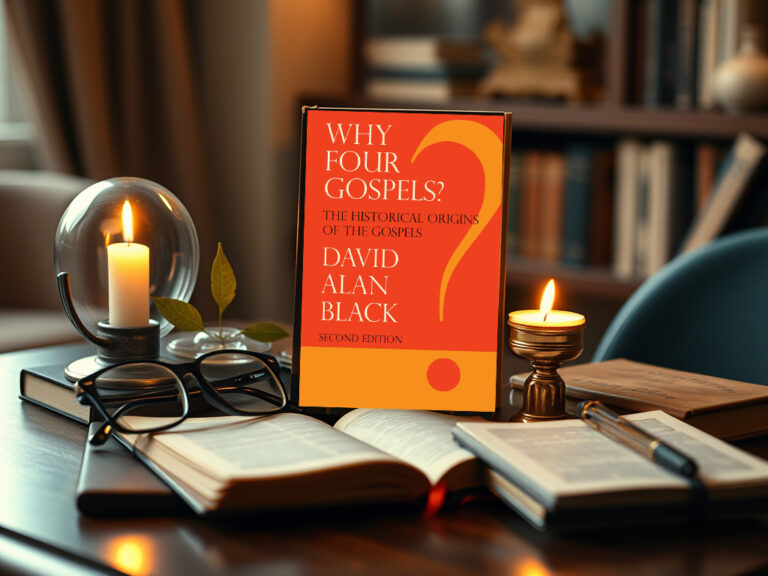Edward W. H. Vick: Resurrection As Fulfilment
by Dr. Edward W.H. Vick, retired professor and author of From Inspiration to Understanding: Reading the Bible Seriously and Faithfully, Philosophy for Believers, Creation: The Christian Doctrine, History and Christian Faith and more!
 Through the resurrection God brings into being His new people, the community of resurrection faith. The spokesmen of this earliest faith, the writers of our New Testament, related what God had done in Jesus Christ to what He had done in Old Testament days. They read what God had done in Jesus Christ in the light of what He had promised and what He had done in the history of the Hebrew people. They saw that, in different ways, the revelation of God to Israel had now been fulfilled in Jesus Christ and in His new community, the church of the resurrection. Jesus, as the act of God, had come to them from a past in which talk of God’s activity was assumed at the very basis of faith. It was this knowledge of God, as a God of mighty acts, a saving God who moved to effect the health and the salvation and righteousness of His people, that enabled the Christian believers to proclaim that in the resurrection of Jesus there was manifest the decisive act of God.
Through the resurrection God brings into being His new people, the community of resurrection faith. The spokesmen of this earliest faith, the writers of our New Testament, related what God had done in Jesus Christ to what He had done in Old Testament days. They read what God had done in Jesus Christ in the light of what He had promised and what He had done in the history of the Hebrew people. They saw that, in different ways, the revelation of God to Israel had now been fulfilled in Jesus Christ and in His new community, the church of the resurrection. Jesus, as the act of God, had come to them from a past in which talk of God’s activity was assumed at the very basis of faith. It was this knowledge of God, as a God of mighty acts, a saving God who moved to effect the health and the salvation and righteousness of His people, that enabled the Christian believers to proclaim that in the resurrection of Jesus there was manifest the decisive act of God.
Resurrection is God’s act. This was the message of the early Christian preachers. It was God who raised up Jesus from the dead, and in this act fulfilled his promises. Now that they could confess the resurrection of Jesus from the dead, the Christian believers could take a second look at the prophecies of the Old Testament and the great promises of God to the key figures in the history of Israel. In this way, God’s promises to Israel were viewed in a new light. A most important conviction emerged (as stated in II Corinthians 1:20): ‘ALL the promises of God find their Yes in Him’ (R.S.V). The Old Testament was thus seen as a series of anticipatory promises, whose meaning and purpose could be seen only in the light of God’s act in raising Jesus from the dead. Thus, the books of the Old Testament came to be read for the encouragement of the churches, and as source materials for the confession of faith in Jesus Christ. The promises therein written were now seen to contain new possibilities. The Gospel of God had been promised ‘beforehand by His prophets in the holy Scriptures’ (Romans 1:2). ‘For whatever was written in former days was written for our instruction, that by steadfastness and by the encouragement of the scriptures we might have hope’ (Romans 15:4).
What we have in Jesus Christ, according to the interpretation of the New Testament, is the future of the promises given to the Hebrews and documented in their sacred Scriptures. ‘Remembering the promise issued aforetime means asking about the future in the past.’ The Old Testament is a book of anticipation. The New Testament believed that it could look back from the vantage point of a fulfilment and see the meaning of what was said.
One could approach the past with a new set of questions, and receive illumination as one did so. Was this indeed what the promises really meant? If so the future of the promises may have to be seen as quite different from what had been customarily and for long years expected. The anticipations and the questions took new shape as the answer gave a hint of what should be awaited and of what should be asked. It was in the light of the certainty of the answer that had been given in the act of God in the resurrection of Jesus Christ that the Old Testament, now seen as anticipatory of what had taken place, could be (as indeed it was) taken into the Christian community as a ‘sacred’ book.
God’s act in the resurrection is His saving act in the world, His world, the world of His creation. That act is God’s creative word directed toward man in his need. God’s last word is not the destruction of sinful man in death. Jesus, who had identified Himself with the sinner, was put to death upon the cross. But crucifixion is not the last word. In the resurrection of this man there is revealed for the first time the possibility of a new relationship between God and the man whom he has judged in death — which means the revelation of a new situation in which God and the sinner are reconciled. God’s last word is not the destruction of sinful man in death but the foundation of a new life through the resurrection. In the raising of the Crucified, it is revealed that the peccator (sinner) can at the same time also be justus (righteous).’
In Jesus man’s salvation is not simply promised, as it is in the prophets, in Jesus in the resurrection man’s salvation is realized. In Jesus the union between God and man is made complete. Resurrection follows death as the act of God. In Jesus Christ the divine righteousness has happened among men in the presence of this man. Through the resurrection divine righteousness comes to the unjust. He is raised for our justification (Romans 4:25), that we might be made the righteousness of God in Him (II Corinthians 5:21).
[slideshow_deploy id=’2645′]




